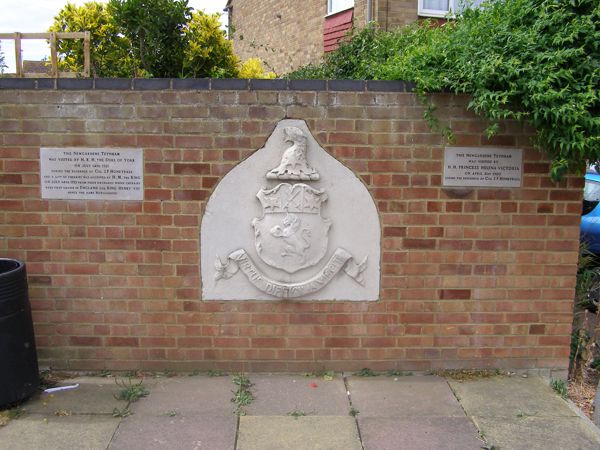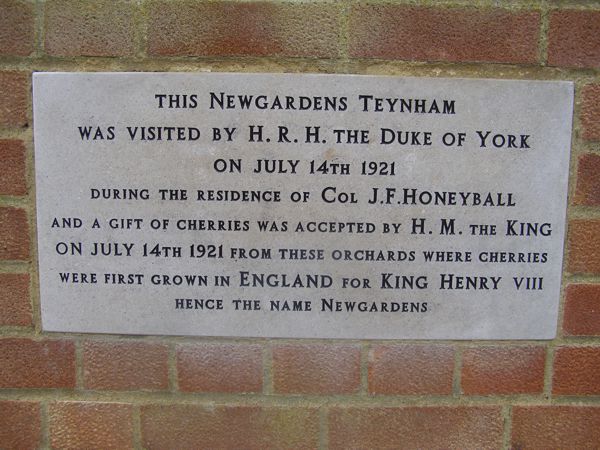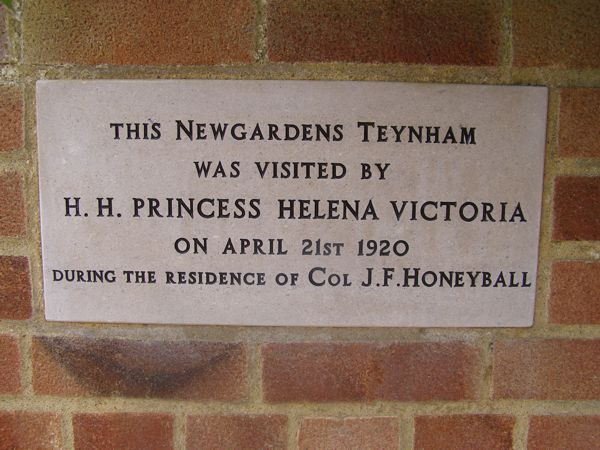Plaques at Honeyball Walk Commemorating Royal Visits



WORDING ON THE PLAQUES
THIS NEWGARDENS TEYNHAM WAS VISITED BY HRH THE DUKE OF YORK ON JULY 14TH 1921 DURING THE RESIDENCE OF COL. J F HONEYBALL AND A GIFT OF CHERRIES WAS ACCEPTED BY HM THE KING ON JULY 14TH 1921 FROM THESE ORCHARDS WHERE CHERRIES WERE FIRST GROWN IN ENGLAND FOR KING HENRY VIII HENCE THE NAME NEWGARDENS
*********
THIS NEWGARDENS TEYNHAM WAS VISITED BY H H PRINCESS HELENA VICTORIA ON APRIL 21ST 1920 DURING THE RESIDENCE OF COL. J F HONEYBALL
*********
A COUNTRY DIARY
(from the'The Guardian' newspaper 1st June 1973)
KENT : Richard Harrys deserved more ihan this. The two plaques on the brick wall mention royalty receiving a basket of cherries here at Newgardens in the 1920s and the names of the lanowners of that time. But no mention of the man who started it all.
The gardens were new when Henry VIII was still on the throne and his fruiterer, Richard Harrys, brought in cherries, pippins and golden rennets from Flanders and planted them here on seven score acres of the King's ground.
His ordered rows of trees became the "mother" of all the later orchards in Kent. Here, it may be argued, the garden of England really began.
The estate has been built over recently and the Tudor house demolished. A search round the site revealed only a few fine old trees and a farm cottage.
I walked away from the houses through lanes and orchards still favoured with the last of the blossom to the churchyard which stands on a knoll overlooking the Swale marshes. Twelve irrigation
cannons were firing water from a drainage ditch. clanking in a leisurely circuit. the only sound in a warm, close evening. Rich smells of wild parsley and chestnut filled the air. On all sides was the neat, ordered landscape of orchards. apple, pear, cherry.
covering the gentle slopes. Before Harrys's time there had been poor fruit here and uneconomic vines.
JOHN T. WHITE